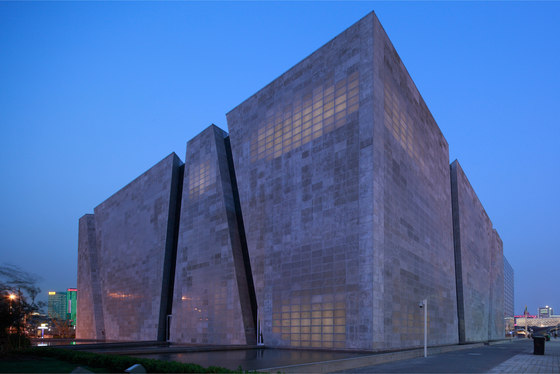Share This Article
Discover the top 10 materials transforming architecture and interiors in 2025—from glowing birch to bio-based composites. Explore innovation, sustainability, and design impact in one guide.
As the architectural world leans more into environmental responsibility and technological innovation, 2025 marks a turning point for materials science. Architects and designers are choosing building materials that don’t just look good but actively contribute to energy efficiency, structural intelligence, and long-term sustainability.
Here are ten cutting-edge materials making waves in the industry right now.
1. Glowing Birch Trees
Overview: Inspired by the slender silhouette of birch trees, this material combines decorative form with LED-based ambient lighting. It’s ideal for interior decor, landscape design, and experiential spaces.
Key Applications:
- Feature lighting in lobbies and wellness centers
- Sculptural lighting installations in hospitality spaces
- Ambient landscaping elements
Why It Matters: Combines biophilic aesthetics with energy-efficient illumination. Glowing birch creates immersive and calming environments while reducing reliance on conventional light fixtures.
2. Translucent Cement
Overview: Also known as light-transmitting concrete, this material incorporates optical fibers or resins, allowing natural or artificial light to pass through the surface without compromising strength.
Use Cases:
- Museum walls and art galleries
- Interior partitions with integrated lighting
- Exterior facades with daylight control
Why It Matters: Reduces the need for artificial lighting while providing a futuristic, high-design aesthetic. Perfect for projects emphasizing sustainability and user experience.
The Italian Pavilion at the 2010 World Expo in Shanghai, featuring i.light, patented transparent concrete panels.

3. Wire Mesh Glass
Overview: Laminated or tempered glass embedded with a wire mesh that adds strength and prevents shattering, originally developed for fire-resistance but now used widely in modern design.
Contemporary Applications:
- Office partitions
- Balcony railings
- High-rise safety glass facades
Why It Matters: Marries form and function by offering both structural safety and a semi-industrial visual appeal, fitting beautifully into adaptive reuse and minimalist architecture.

4. LED Film Screens
Overview: Ultra-thin, transparent, and flexible LED film can be applied to any glass or flat surface to turn it into a programmable display without blocking natural light.
Key Uses:
- Interactive storefronts
- Exhibition booths
- Smart office dividers
Why It Matters: Turns architectural surfaces into dynamic content platforms for branding, art, or real-time data. Especially useful in retail and high-tech workspaces.

5. Hot Melted Natural Stone
Overview: Industrially melted and reshaped natural stone offers high durability, antibacterial surfaces, and elevated heat resistance.
Applications:
- Kitchen countertops
- High-end bathrooms
- Spa and wellness interiors
Why It Matters: Combines the timeless look of stone with the advantages of modern material processing—perfect for luxury spaces with sustainability goals.
6. Phase-Change Materials (PCMs)
Overview: PCMs absorb and release thermal energy during phase transitions (solid to liquid and back), helping stabilize indoor temperatures naturally.
Best For:
- Passive house designs
- Climate-resilient housing
- Energy-efficient wall systems
Why It Matters: Reduces heating and cooling demands significantly, thereby slashing energy costs and carbon footprints in temperature-sensitive regions.

7. Transparent Wood
Overview: A cellulose-based wood composite chemically treated to become up to 90% transparent while retaining strength.
Applications:
- Skylights
- Window panels
- Decorative partitions
Why It Matters: Functions like glass but is biodegradable, strong, and thermally efficient. A promising eco-alternative for sustainable architectural glazing.

8. Bio-Based & Natural Composites
Overview: These include low-carbon materials like hempcrete, mycelium bricks, and agricultural waste panels.
Applications:
- Insulation in green homes
- Temporary structures
- Low-cost housing
Why It Matters: Biodegradable and regenerative, these materials help reduce landfill waste and are often locally sourced, encouraging circular building practices.

9. Graphene-Enhanced Concrete & Geopolymers
Overview: New-age concrete mixtures integrate graphene or use geopolymer binders like fly ash to reduce cement usage while improving strength and durability.
Use Cases:
- High-performance infrastructure
- Carbon-neutral building frameworks
Why It Matters: Addresses the construction industry’s massive carbon footprint by reducing dependency on traditional Portland cement while improving longevity and strength.

10. Recycled Plastic Chainmail Structures
Overview: Chainmail-like systems made from 3D-printed or extruded recycled plastic, offering modular, foldable, and lightweight alternatives to rigid structures.
Popular In:
- Temporary pavilions
- Refugee shelters
- Pop-up architecture
Why It Matters: Showcases how recycled materials can become high-performance, aesthetic building systems with zero compromise on creativity or sustainability.

Building Smarter, Greener, and Brighter
From energy-saving translucent concrete to expressive LED-integrated façades, the materials of 2025 offer more than just aesthetics. They represent a profound shift in how we think about resource use, climate adaptation, and the user experience.
Whether you’re an architect, interior designer, or urban planner, these materials expand the possibilities of what can be built—and how. Embracing them means stepping into a future that is not only smarter but also more responsible and regenerative.
Stay updated with SMART.POV for more insight into future-forward innovations shaping the built environment.
